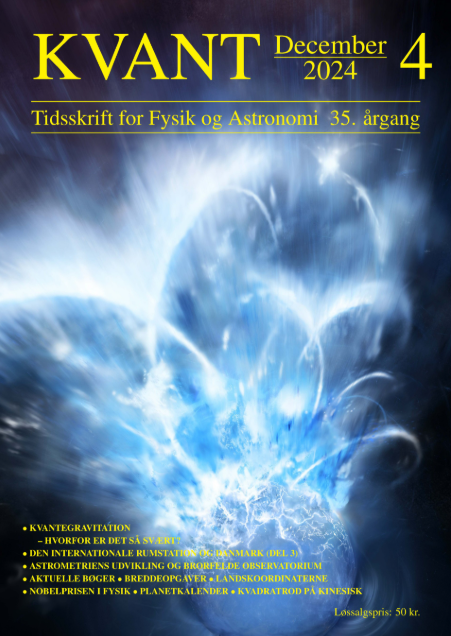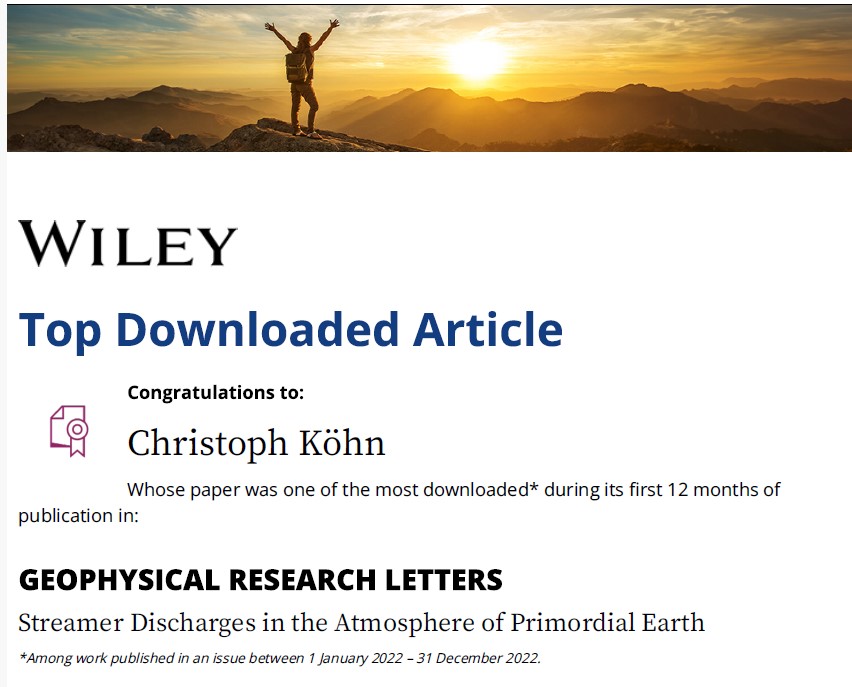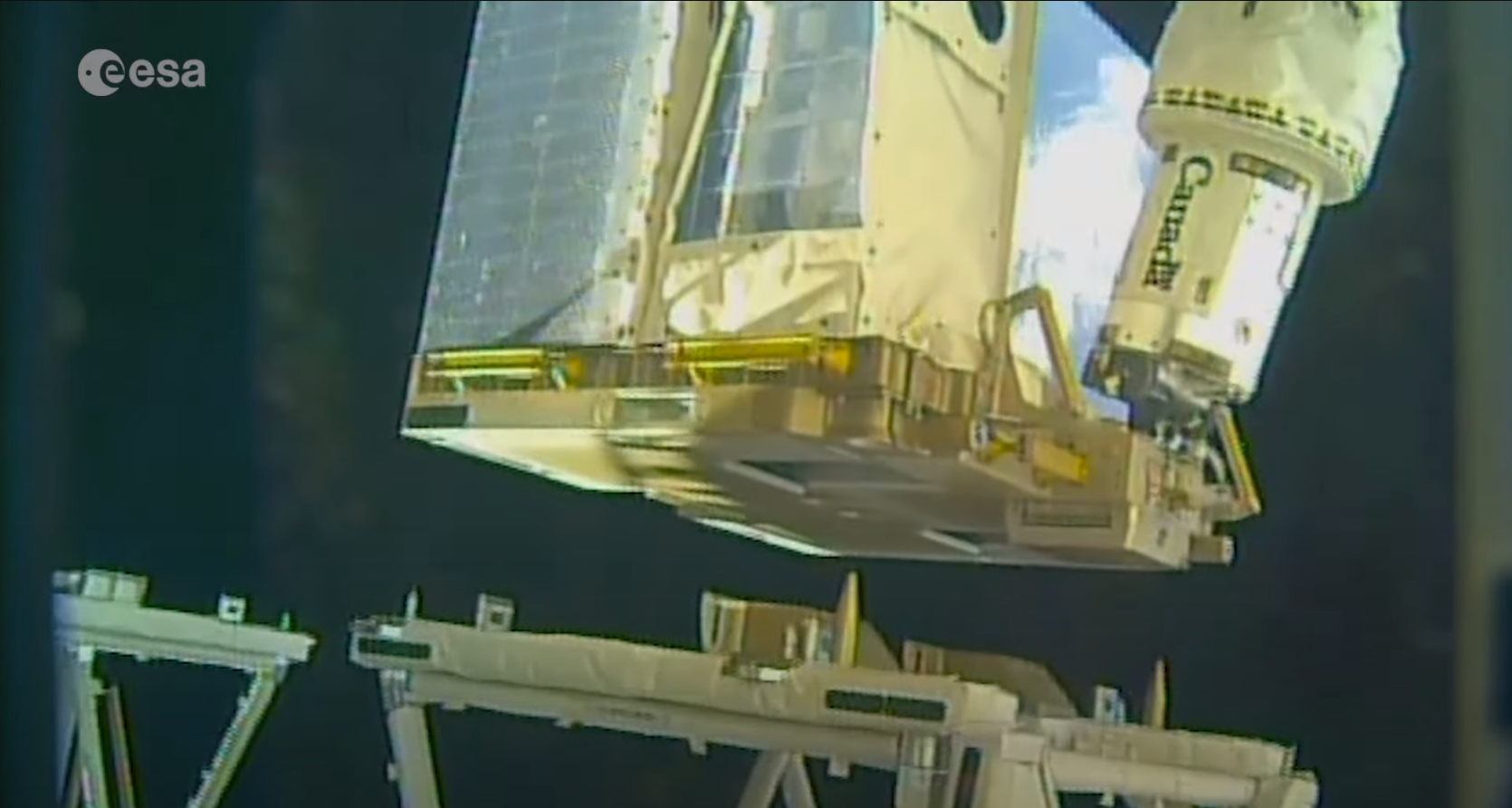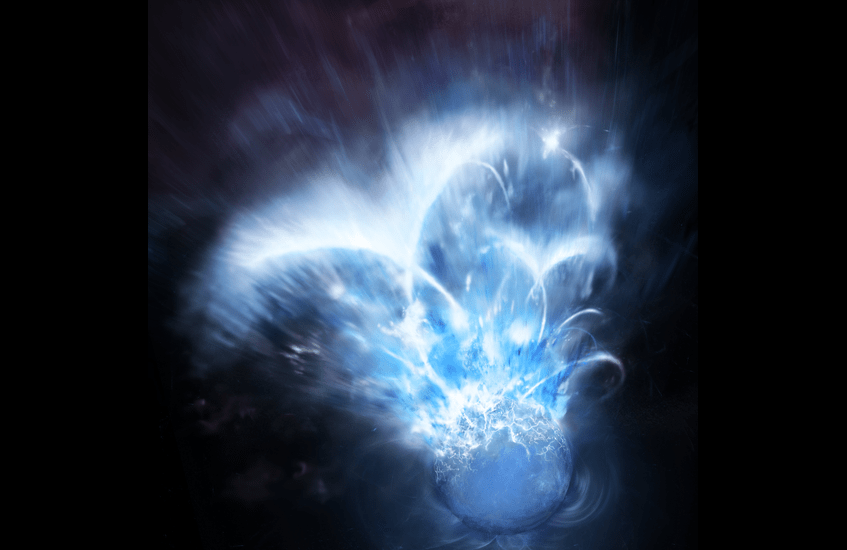
Professor Victor Pasko discusses new research into lightning initiation and the work done by Nikolai Østgaard from Bergen.
Danmark har sammen med Norge og Den Europæiske Rumorganisation ESA besluttet at forlænge det danske rumprojekt ASIM’s levetid indtil foråret 2026. Et bevis på stærkt internationalt samarbejde, siger uddannelses- og forskningsministeren.

ASIM and its six very productive years in space have made the front page of the Danish Physical Society's journal, 'KVANT', with a splendid artist's representation of a gamma flash seen by ASIM from a magnetar, provided by the University of Bergen and Mount Visual. Issue 4 of the Danish Journal for Physics and Astronphysics will be appearing during December 2024. The journal and homepage are in Danish.

DTU Space researchers in the Atmospheric Electricity group have been awarded a diploma for from the American Geophysical Union journal Geophysical Research Letters for writing one of the most downloaded research papers in 2022. Christoph Köhn, Martin Bødker Enghoff and Olivier Chanrion wrote the paper entritled 'Streamer Discharges in the Atmosphere of Primordial Earth' with their colleague Sasa Dujko. While Olivier is an active member of the ASIM instrument team and Science Data Centre, the other researchers work on theoretical and mathematical models which are used to understand the processes seen in the ASIM data. Their current research focuses on how lightning streamers develop in atmospheres with various compositions, including the chemical composition and conditions of primordial Earth.
@DTUSpace: Med et kamerasystem fra DTU Space har @Astro_Andreas taget nye fantastiske billeder til vores forskning i de voldsomme lyn-fænomener, der finder sted i Jordens atmosfære. Her et blåligt lyn i en sky og over det et lyn kaldet en rød fe #dkrummet #dkastro
The Danish ESA astronaut, Andreas Mogensen, has been filming unusual lighting-like discharges above the world's most energetic thunderstorms. Here are the first picutres.

To celebrate the 50th Anniversary of the founding of the University of Malaga, Spain, the university has awarded its first prize ever for Excellence in Research to an ASIM paper, led by UMA professor Alberto Castro-Tirado. The paper about ASIM's detection of quasi-periodic oscillations (QPOs) in the initial explosion of a magnetar flare, was published in Nature in December 2021. The author list includes many prominent ASIM and ASDC collaborators and partners. Though the ASIM instruments were designed to look down on the Earth to study electrical discharges from powerful thunderstorms. there is no way to stop high energy photons (x-rays and gamma rays) from space penetrating the sides of the instruments and being registered by the detectors. In this way ASIM observed in better detail than any other instrument the magnetic explosion of a neutron star in another galaxy (NGC 253).

ESA video of the ASIM relocation using the Canada robotic arm. This video is speeded up to show the procedure in couple of minutes - in reality it took about 5 hours

The ASIM instrument aboard the International Space Station was the only instrument out of seven which detected the giant flare and recorded the main burst phase without being blinded by the giant flash of high energy which saturated the other six detectors at the time of the maximum emission. After a very long journey through space, a burst of high-energy radiation was detected by the Atmosphere-Space Interactions Monitor (ASIM) instrument aboard the International Space Station (ISS) on April 15, 2020. The origin of this energetic burst was found to be a giant flare from an extremely magnetized neutron star known as a magnetar, located more than 10 million light years away in the galaxy NGC 253.